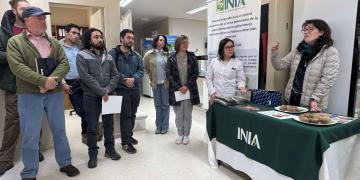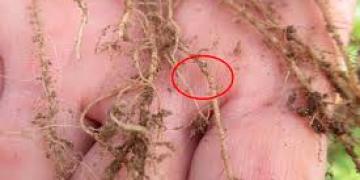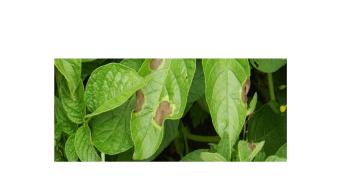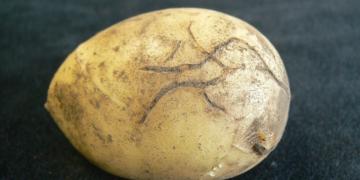EEUU: Potato researcher warns of new disease threat
PARK CITY, Utah — A plant pathologist has advised the potato industry to prioritize research and testing to combat a new threat to U.S. spud production — the bacterial pathogen dickeya dianthicola.
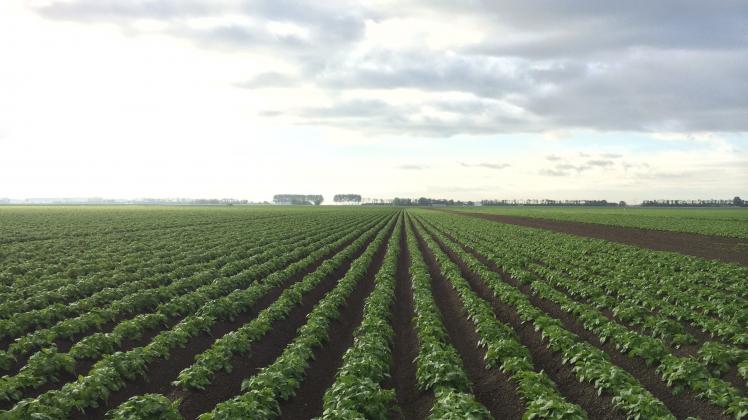
University of Wisconsin associate professor Amy Charkowski, who also directs Wisconsin’s seed potato certification program, told growers at the National Potato Council’s summer meeting dickeya caused heavy damage to spud fields throughout the East Coast in 2015 and has been troublesome again this season.
Charkowski said the pathogen has posed a major challenge to European potato production since the 1950s, but it didn’t surface in the U.S. until the fall of 2014, when a sample from the Northeast tested positive. It’s since been confirmed in most of the major potato states, including Idaho, North Dakota, Texas, New Mexico, Indiana, Ohio, Wisconsin, Pennsylvania, North Carolina, New York, New Jersey, Maryland, Maine and Florida. It’s also been found in Canada in New Brunswick and Ontario.
“If it gets too entrenched in the seed system, it could be a real problem,” Charkowski said. “I’m really worried about seed testing right now. We don’t have the capacity to test in our system.”
Charkowski said the bacteria can survive in irrigation water and thrives in warm, humid environments and poorly ventilated potato cellars. She said dickeya is easily confused with its close relative, pectobacterium, which is common in states including Idaho and causes similar “black leg” symptoms, including curling and wilting leaves, low emergence and stem-base rot.
Charkowski said dickeya symptoms may remain latent, and it takes fewer dickeya bacteria to infect a plant. Both pathogens need an open wound to infect tissue.
No resistant commercial varieties have been developed. Fortunately, European researchers say the pathogen doesn’t tend to survive longer than nine months in soil, and it can be effectively controlled by good sanitation practices, Charkowski said.
Charkowski said a researcher from Scotland has been working with Maine growers to understand dickeya, and she and several colleagues applied for a grant to work with him as a consultant. She’d also like funding to research environmental conditions that favor dickeya and how to keep dickeya from spreading on seed cutters, believing seed is the primary way the disease spreads. She would also like to see seed certification programs single out black leg in test results.
University of Idaho Extension potato storage specialist Nora Olsen spotted symptoms of dickeya at the Kimberly Research and Extension Center in 2015, after learning of them during a meeting with Maine growers. The center’s samples tested positive, along with about six other samples subsequently submitted that season by commercial growers, she said. Charkowski said her lab tested a positive sample from an Idaho commercial potato farm this season.
Idaho Potato Commissioner Ritchey Toevs, of Aberdeen, advocates dickeya testing of nuclear and first-generation seed as part of his state’s seed certification program, using samples growers must already submit for ring rot testing. Though Toevs acknowledges Idaho’s conditions appear to be unfavorable for widespread dickeya, he noted, “We see problems come up so quickly, and you don’t know which ones are big threats and which ones you can live with.”
Washington Potato Commission Executive Director Chris Voigt said dickeya is on his state’s radar, though it hasn’t been confirmed in Washington, and he sees no need to commit resources toward it, yet.
“It hasn’t been a concern,” Voigt said.
Fuente: http://www.capitalpress.com/Research/20160722/potato-researcher-warns-of-new-disease-threat

